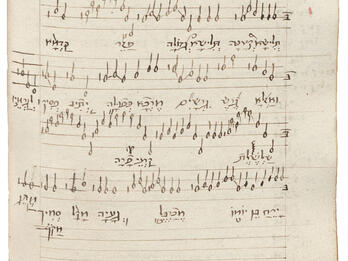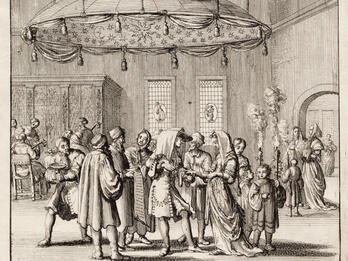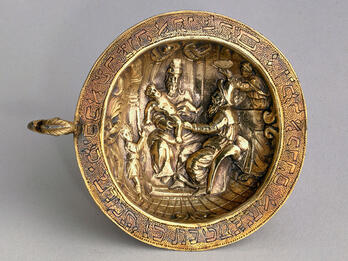Shene luḥot ha-berit (Two Tablets of the Covenant): On Shavuot
The study program of this night has already been published and made known to the multitudes through the pamphlets that have been disseminated. And this custom has been disseminated throughout all of the land of Israel, and throughout all of the kingdoms [of the diaspora]—none is exempt; all have received it as one, from the great to the small. Thus, they have upheld this custom and have taken it upon themselves and upon their descendants [see Esther 9:27]. And since I have added a touch of my own concerning the matter of the study program of this night, I will therefore list everything together. Those who fear the word of the Lord will endeavor to form a minyan together, for the divine presence dwells upon every group of ten [b. Sanhedrin 39a]. It is necessary to learn part of the Torah, the Prophets, and the Writings, the six orders of the Mishnah, Sefer yetsirah and the Zohar, and the six hundred and thirteen commandments. [ . . . ] In order to display the greatness of this night, how precious it is to the Holy One, one should not cease for one minute from cleaving to the Torah. It is permitted to pause between topics in order to speaks words of motivation, involving ethics [musar], an examination of one’s deeds, and ordinances for maintaining the fear of the Lord.
Credits
Isaiah Horowitz, “On Shavuot,” in Sefer shene luḥot ha-berit ha-shalem (Two Tablets of the Covenant) (Jerusalem: Mekhon shaʻare ziv, 1993), pp. 2–5.
Published in: The Posen Library of Jewish Culture and Civilization, vol. 5.





